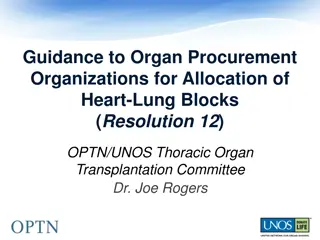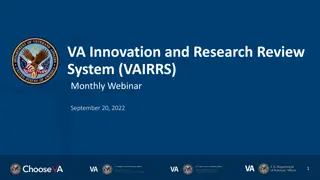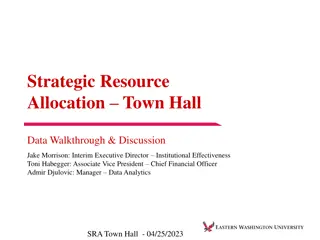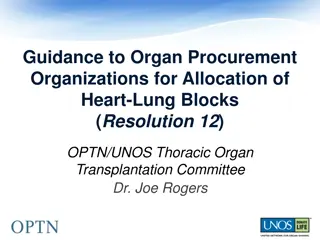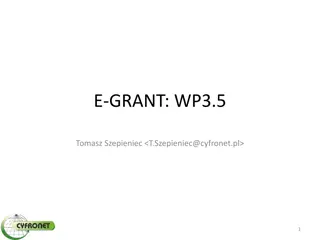Resource Allocation Review Webinar: Enhancing School Improvement Practices
Delve into the essential aspects of Resource Allocation Reviews in the educational setting through this webinar provided by the Office of School and District Improvement. Gain insights on the requirements, tools, and significance of conducting Resource Allocation Reviews to enhance school improvement practices. Explore community agreements and the importance of fostering a supportive and respectful environment for effective collaboration in educational endeavors.
Download Presentation

Please find below an Image/Link to download the presentation.
The content on the website is provided AS IS for your information and personal use only. It may not be sold, licensed, or shared on other websites without obtaining consent from the author.If you encounter any issues during the download, it is possible that the publisher has removed the file from their server.
You are allowed to download the files provided on this website for personal or commercial use, subject to the condition that they are used lawfully. All files are the property of their respective owners.
The content on the website is provided AS IS for your information and personal use only. It may not be sold, licensed, or shared on other websites without obtaining consent from the author.
E N D
Presentation Transcript
Welcome! The webinar will begin at 9:30am Please rename yourself on Please rename yourself on Zoom to include Zoom to include oName Name oLEA or School Name LEA or School Name
Webinar: Resource Allocation Review Office of School and District Improvement Community Training & Assistance Center CTAC February 29, 2024
Warm-Up Activity Which animal describes how you feel when someone mentions Resource Allocation Reviews? 2
Objectives By the end of today s webinar, participants will: By the end of today s webinar, participants will: Demonstrate understanding of the Resource Allocation Review requirements and tools What is a Resource Allocation Review? Who needs to do a Resource Allocation Review? Why should I do a Resource Allocation Review? Be prepared to engage in and/or facilitate a Resource Allocation Review 3
Community Agreements What They Are: What They Are: A consensus on what every person in our group needs from each other and commits to each other in order to feel safe, supported, open, productive and trusting so that we can do our best work and serve our students. * *Source: National Equity Project Source: National Equity Project 4 5
Why Community Agreements Matter We are unable to achieve our goals in a hostile, disrespectful, or undermining group culture. Some of the most critical conversations teams need to have are emotional, painful, and uncomfortable (e.g., equity issues, examining individual practice), but we will not engage or make ourselves vulnerable without emotional safety and trust. Adult relationships shape group culture. A healthy culture is key to personal sustainability in the challenging jobs of education. *Adapted from National Equity Project *Adapted from National Equity Project 5
Our Community Agreements Challenge ideas, not people Stay engaged in the process Speak your truth Listen to understand Speak from your own experience Keep our students at the center Be mindful of your talk time 6
What is a Resource Allocation Review (RAR)? A Resource Allocation Review is a team-based inquiry process for LEAs and schools to understand the current state of how their educational educational resources resources are being used as part of the continuous improvement process. This is a best practice for all LEAs and schools. A federal requirement for LEAs that have school identified as CSI and/or with student subgroups identified as ATSI. During the RAR, LEAs and schools will start by examining low performing subgroups Listed as Student Subgroup Identifications on RIDE Report Card in the Accountability tab 7
What the RAR isis notand could be Bowman, A., Taylor, T. (2022). ESSA Resource Allocation Reviews Design Principles and Considerations for Conducting a Meaningful Resource Allocation Review. San Francisco, CA: Region 15 Comprehensive Center Network. 8
What educational resources should be considered for RAR? Consider the following educational resources: Human Resources Schedule Professional Learning Equipment Materials/Supplies Programs/Services Community Collaboration and Partnerships Finance educational resources: 9
ESEA & ESSA set requirements for identifying & addressing resource inequities Who needs to do a RAR? SEA Periodically conduct RAR in each LEA with significant number of schools identified for CSI, Periodically conduct RAR in each LEA with significant number of schools identified for CSI, TSI, and ATSI. TSI, and ATSI. LEA Ensure schools identified as CSI and ATSI undertake a process to identify resource Ensure schools identified as CSI and ATSI undertake a process to identify resource inequities that are addressed through an improvement plan. inequities that are addressed through an improvement plan. School CSI and ATSI schools must identify resource inequities that are addressed through an CSI and ATSI schools must identify resource inequities that are addressed through an improvement plan. improvement plan. 10
Addressing ESSA Requirements Periodically conduct RAR in each LEA with significant number of schools identified for CSI, TSI, and ATSI. Periodically conduct RAR in each LEA with significant number of schools identified for CSI, TSI, and ATSI. SY23-24: RIDEconducts Comprehensive RAR Comprehensive RAR in LEAs with 2+ CSI schools SY23-24: RIDE conducts Desktop RAR Desktop RAR in LEAs with 80% or more schools identified as TSI/ATSI Reviews LEA RAR Document for all LEAs with CSI schools SEA Ensure schools identified as CSI and ATSI undertake a process to identify resource inequities that are Ensure schools identified as CSI and ATSI undertake a process to identify resource inequities that are addressed through an improvement plan addressed through an improvement plan. . Resource inequities and plan entered into CSIP/SIP within the SPS forsuperintendent approval LEA with CSI schools completesLEA RAR Document (Google folder) and submits to RIDE for review LEA CSI and ATSI schools must identify resource inequities that are addressed through an improvement plan. CSI and ATSI schools must identify resource inequities that are addressed through an improvement plan. RARs are best practice as part of needs assessment for ALL schools CSI and ATSI schools enter resource inequities and plan into CSIP/SIP within the SPS Recommend that TSI schools create plan to address the needs of identified subgroup(s) School Text in RED are ESSA requirements. Text in RED are ESSA requirements. 11
Why is this important? Conducting an RAR provides schools and LEAs with data to inform improvement planning, especially targeted low- performing subgroups. RAR is part of needs assessment. Results feed into goals, initiatives, and/or action steps. 12
Why is this important? Per ESSA, any school identified as in need of ATSI with a low performing subgroup that has not met the exit criteria for four consecutive years will be identified as in need of comprehensive support and improvement. 4 Years Identified as ATSI Identification of CSI 13
We all have a role in the RAR process School School Examines how resources are allocated within the school, focusing specifically on low-performing subgroups and SIP LEA LEA Examines resource inequities identified within schools & examines how resources are allocated between schools, specifically focusing on low-performing schools and student subgroups SEA SEA Examines resource inequities identified within LEAs 14
School Level Resource Allocation Reviews To conduct an RAR, school leaders can use To conduct an RAR, school leaders can usethe the RAR: School Level Tool RAR: School Level Tool 15
School Level Activity English Learners English Learners Achievement & Achievement & Growth, and Growth, and Overall Low Overall Low Performance Performance Use the RIDE Report Card to identify subgroups at your school that have been identified as TSI/ATSI EL teachers are available to EL teachers are available to supports gr.8 during science supports gr.8 during science block block Consider your school's schedule OR collaboration/partnerships OR community Reflect on the following: Reflect on the following: How does your schedule and/or community collaboration & partnerships impact the low- performing subgroup(s)? After school supports for After school supports for language development with language development with local university local university 16
School Level RAR Tool What did you notice? What did you wonder? Based upon your review, what resource Based upon your review, what resource inequities have emerged? inequities have emerged? What follow-up thoughts and/or questions do you have? What opportunities have presented themselves based on your school building RAR? Are there additional resources and/or SIP Are there additional resources and/or SIP revisions (goal, initiative, action steps) that revisions (goal, initiative, action steps) that are needed to address the needs of the are needed to address the needs of the identified subgroup(s)? identified subgroup(s)? 17
LEA Resource Allocation Reviews LEAs can usethe UCOA Resource Allocation Review Dashboards 18
UCOA Resource Allocation Dashboard Activity(Demo) Following the model of the UCOA Resource Allocation Dashboard Use the link in the chat box to review the Dashboard for Cumberland Reflect on the following: Reflect on the following: (1) What school has the lowest proficiency? (2) What school has the highest PPE? 19
UCOA Resource Allocation Dashboard Activity Using the same link, find your LEA within the UCOA Resource Allocation Dashboards Select your LEA's Dashboard and explore the various tabs across the top Reflect on the following: Reflect on the following: (1) What stands out to you? (2) What do you want to explore further? 20
UCOA Resource Allocation Review Dashboards Reflection Questions What did you notice? What did you wonder? What follow up thoughts and/or questions do you have? Are there additional resources and/or LEA Strategic Plan revisions (goal, initiative, action steps) that are needed to address the resource inequities? 21
RAR Wrap-Up Once a LEA and schools have completed the RAR, central office and Once a LEA and schools have completed the RAR, central office and school leaders will prepare for next steps school leaders will prepare for next steps Given the discussion and the inequities that have emerged: o Consider how the distribution and use of resources have impacted student outcomes. o Consider what next steps could be implemented to address the inequities. School level resource inequities need to be named and addressed in the CSIP/SIP at the goal, initiative, or action step level. This will be identified within the SPS (coming soon). 22
Resources RIDE s RAR Resources: RIDE s RAR Resources: UCOA Resource Allocation Review Dashboard Resource Allocation Review Process Guide coming soon LEA RAR Document (for LEAs with CSI Schools)* School Level RAR Tool* (*) available on website on 3/1 RAR Documents: RAR Documents: Rhode Island s ESSA State Plan Every Student Succeeds Act (ESSA) Letter to Chief State School Officers regarding RARs 23
Closing Webinar Feedback Webinar Feedback For questions, LEA & School Colleagues LEA & School Colleagues contact the Office of School and District Improvement CTAC Partners CTAC Partners Lee Rutledge & Lee Rutledge & Shelley Nixon Shelley Nixon- -Green osdi@ride.ri.gov Green We appreciate your time and partnership! 24












